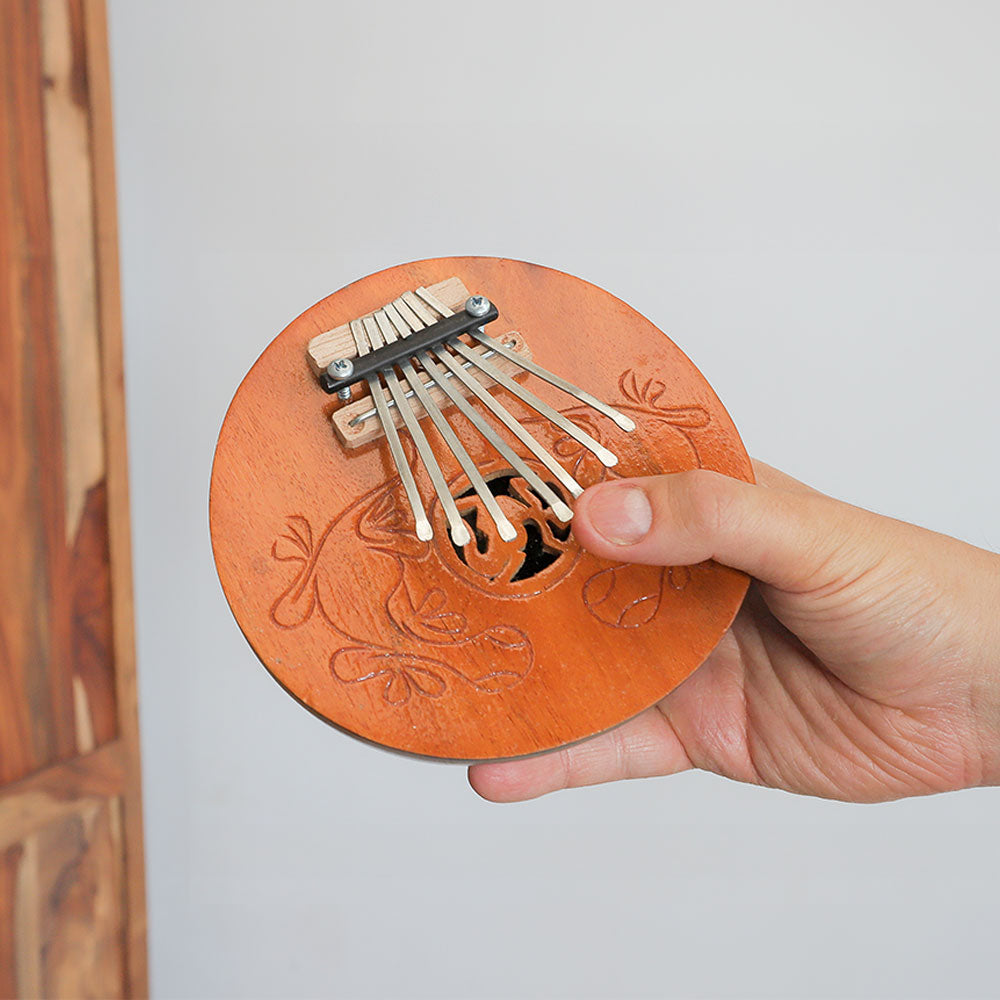Sound therapy might seem like a modern wellness trend, but its roots are deeply embedded in the history of human civilization. It's a practice you may have heard of but need to understand fully. Throughout this guide, you'll learn about its origin, its myriad benefits for mental health and physical ailments like tinnitus, and the tools and essentials that make it an effective therapeutic modality. You will discover how sound therapy can be incorporated into your life, potentially enhancing your overall well-being.
What is sound therapy?
Before delving into the intricacies of sound therapy, it's essential to grasp what it is. At its core, sound therapy is the therapeutic application of sound frequencies to a person's body and mind with the intention of bringing them into a state of harmony and health. The principle behind sound therapy is that all matter, including the human body, vibrates at specific frequencies. When these frequencies are out of balance, it can lead to physical or emotional disease.
In sound therapy, you are exposed to sounds and vibrations that are purposefully directed to bring your body's cells into equilibrium. This is achieved through various instruments and techniques designed to resonate with specific frequencies that align with the body's natural vibrations. The process can be passive, where you listen to the therapeutic sounds, or active, where you may use your voice or movements in conjunction with the sounds.
In this therapy, you're not just a passive recipient; you actively participate in your healing process. By listening to or engaging with the sounds, you can facilitate your body's own healing capabilities. The sound waves travel through your body, potentially reaching deep into your cells and promoting balance and peace.
The history of sound therapy
Since ancient times, civilisations have recognised sound's power and used it in various forms for healing and spiritual purposes. The origin of sound therapy can be traced back to ancient Greece, where music was used to cure mental disorders. Fast forward to the indigenous cultures that employed drumming and chanting as an integral part of their healing rituals.
In ancient Tibet, singing bowls made of seven different metals corresponded with the seven planets known at the time, and they were played to restore balance to the body and spirit. The Aboriginal people of Australia used the didgeridoo as a healing tool for over 40,000 years. They believed in its capacity to heal physical injuries and promote general well-being. This historical context underscores the significance of sound therapy as a time-honored, universal healing modality.
The sound therapy's history weaves through many traditions and practices. In India, using mantras and chants dates back thousands of years, forming a cornerstone of the meditative practices found in Hinduism and Buddhism. The ancient Egyptians also utilized the power of vocal toning and the music of harps and flutes in their healing temples. Each culture's unique approach contributes to the depth of knowledge and practice you can draw upon in modern sound therapy.
The benefits of sound therapy
The benefits of sound therapy are as varied as the instruments used to produce therapeutic sounds. One of the most significant benefits you may experience is reducing stress and anxiety, as sound therapy can induce a meditative state that promotes relaxation and calmness. This is particularly beneficial for your mental health, as it allows you to break free from the cycle of stress and tension that often characterizes modern life.
Sound therapy can offer relief for those who suffer from tinnitus, a condition characterized by persistent ringing in the ears. By using specific frequencies and noises, sound therapy can help your brain refocus and potentially reduce the perception of tinnitus. Furthermore, sound therapy has been linked to improved sleep, reduced symptoms of depression, and even a decrease in pain levels.
Sound therapy can enhance your body's natural healing processes in physical health. The vibrations can help to stimulate blood flow, reduce muscle tension, and even improve immune system function. For those seeking to improve their overall well-being, sound therapy can be a valuable tool to achieve a greater sense of balance and harmony in both body and mind.
Tools, essentials (and where to buy them)
When going on a journey into sound therapy, you'll encounter a variety of tools and equipment designed to produce specific sounds and vibrations. These tools include but are not limited to, Tibetan singing bowls, quartz crystal bowls, tuning forks, gongs, and drums. Each instrument carries its unique properties and is used for specific therapeutic purposes.
Chimes

Chimes are commonly used in sound therapy to induce relaxation, promote mindfulness, and facilitate meditation. The gentle, soothing tones produced by chimes can help calm the mind, reduce stress, and create a tranquil atmosphere conducive to healing and inner peace.
During a sound therapy session, chimes may be played in various patterns and rhythms to evoke specific emotions or states of consciousness, helping individuals achieve a state of deep relaxation and balance. Chimes are often incorporated into guided meditation practices or played alongside other therapeutic instruments such as singing bowls, gongs, or drums to enhance the overall therapeutic effect. Check out our collection of meditation chimes here.
Singing bowls

Singing bowls are utilized in sound therapy as a means to promote relaxation, meditation, and overall well-being. During a session, the practitioner strikes or plays the singing bowl with a mallet, causing it to produce a resonant sound. The vibrations and harmonics generated by the singing bowl are believed to synchronize with the brainwaves, inducing a state of deep relaxation and inner peace.
Individuals may lie down or sit comfortably while experiencing the sound vibrations of the singing bowl, allowing them to enter a meditative state and release tension from their body and mind. Singing bowls can also be placed directly on the body or around the room to create a surround-sound effect, enveloping the individual in soothing vibrations. The tones produced by singing bowls are thought to have therapeutic effects on the body's energy centers. Purchase Singing Bowls here.
Gong

Gongs are integral to sound therapy practices, offering deep resonance and harmonics that can facilitate relaxation, meditation, and healing. In sound therapy sessions, gongs are typically played by striking them with a mallet or rubbing around the rim, producing a rich, sustained sound. The vibrations emitted by the gong are believed to penetrate deeply into the body, affecting the physical, emotional, and energetic levels.
During a session, individuals may lie down or sit comfortably while the transformative vibrations of the gong wash over them. The profound sound of the gong can induce deep relaxation, helping to alleviate stress, anxiety, and tension. Many people report feeling a sense of inner peace, tranquility, and rejuvenation after experiencing a gong bath. Sound therapy also uses gongs to promote energy flow and balance within the body's energy centers or chakras. The gong's resonant tones can help clear blockages and harmonise the body's subtle energy systems, supporting overall well-being and vitality.
Gongs are incredibly versatile in sound therapy. They can also be incorporated into other holistic practices such as meditation, yoga, and breathwork to deepen the therapeutic effects. Some practitioners also use gongs in combination with other instruments, such as singing bowls or drums, to create soundscapes that enhance the healing experience. You can discover our collection of gongs here.
Drums

Drums play a vital role in sound therapy, offering rhythmic patterns and vibrations to induce relaxation, meditation, and emotional release. In sound therapy sessions, drums are often played using repetitive rhythms, either by hand or with mallets, to create a steady and grounding pulse.
The sound and vibrations produced by drums can help individuals enter a meditative state, quieting the mind and promoting a sense of inner calm. Drums' rhythmic patterns also synchronize brainwave activity, facilitating deeper consciousness and heightened awareness. Drums are particularly effective for releasing tension and stress held within the body. The rhythmic beating of drums can stimulate the body's natural relaxation response, promoting physical and emotional release by reducing muscle tension.
During a drumming session, individuals may be invited to drum along with the therapist or facilitator or to listen and absorb the vibrations of the drumming. Group drumming circles are also famous in sound therapy, providing a supportive and communal space for individuals to connect, express themselves, and experience the healing power of rhythm and music.
In addition to standalone drumming sessions, drums may be integrated into other therapeutic modalities, such as guided imagery, visualization, and breathwork, to enhance their therapeutic effects. Drums' versatility and accessibility make them a valuable tool for promoting relaxation, stress relief, and overall well-being in sound therapy practice. Check out our collection of drums here.
Pillow
Pillows play a supportive role in sound therapy sessions by providing comfort, relaxation, and customized support for clients. Strategically placed under the head, neck, or knees, pillows offer physical comfort that allows individuals to relax and fully engage with the therapeutic sounds. They contribute to creating a cozy and nurturing atmosphere, enhancing the overall relaxation experience.
Pillows can absorb excess sound or dampen vibrations in the room, ensuring that the therapeutic sounds remain clear and focused. In group sessions, pillows help establish personal boundaries and provide individualized comfort, fostering a safe and respectful environment for each participant to explore their inner experiences. While not traditional instruments, pillows serve as valuable accessories that contribute to the effectiveness of sound therapy sessions.
Mettalophone chimes

The Mettalophone chimes are used in sound therapy to introduce uplifting and harmonious melodies that promote relaxation and emotional release. Its bright and resonant tones can evoke joy, tranquility, and nostalgia, helping individuals connect with their inner emotions and find inner peace. During sound therapy sessions, the mettalophones may be played gently and rhythmically to induce a meditative state or to guide participants through visualization exercises.
The percussive nature of the mettalophones sound can also stimulate energy flow within the body and encourage movement, making it a versatile tool for both passive listening and active participation. The xylophone's clear and distinct notes can aid in stimulation and sensory integration, particularly for individuals with sensory processing challenges or cognitive impairments. The xylophone enhances the therapeutic environment through its melodic beauty and rhythmic patterns, promoting relaxation, emotional well-being, and holistic healing. Buy mettalophones here.
Sound Therapy (Frequently Asked Questions)
What is sound therapy?
Sound therapy involves using vibratory stimuli to impact a person's physiological and psychological well-being. It encompasses various techniques such as sound healing, vibro-acoustic sound therapy, music, and music therapy.
Does sound therapy actually work?
Sound vibrations profoundly influence our minds and bodies. Studies indicate that sound healing can reduce brainwave activity, inducing a deeply relaxed, dreamy state. Additionally, it has the potential to assist in managing specific physical and mental health issues.
How does sound therapy heal the body?
During sound healing, the frequencies encountered slow down brainwaves to a rejuvenating state, stimulating the body's innate self-healing mechanism.
Who benefits from sound therapy?
Research suggests that sound and music can effectively contribute to the healing of various mental, emotional, and even physical ailments. It has proven valuable as a treatment for conditions like depression, anxiety disorders, and PTSD.
Can I do sound therapy at home?
Numerous tools can be easily used and bought for creating a sound healing experience at home. Common choices include singing bowls, gongs, and tuning forks.







